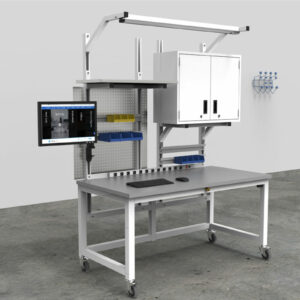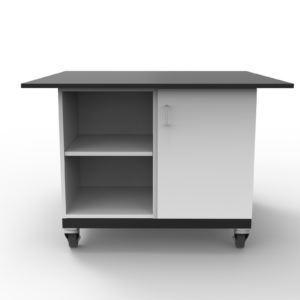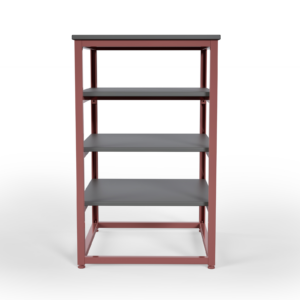The Covid-19 pandemic has upended consumer demand in ways we have never seen before.
Which companies and which industries are not only surviving but thriving?
We take a look, market segment by market segment, starting with Big Tech and E-Commerce.

Big Tech Gets Bigger As Sales Skyrocket at Amazon and Walmart
What do we do when we’re locked down at home during the pandemic?
We go online!
And indeed, we have. During the height of the pandemic, web traffic at the four most popular websites (Google, Amazon, Facebook, and its subsidiary Instagram) rocketed up by double digits.
Over the last year, analysts estimate the big five tech companies – Apple, Amazon, Facebook, Alphabet (Google’s parent company), and Microsoft – collectively earned a net income of around $500 million per day!

With many physical retail stores shut down during the height of the pandemic, consumers turned out in force to purchase goods from Amazon.com, which has been rapidly hiring to support its growing logistics operations. The company has also stepped up its real estate acquisitions to expand its network of offices and warehousing / distribution centers. Amazon is also looking at converting underutilized shopping malls into fulfillment centers to beef up its logistics real estate portfolio within more densely populated areas.
Arch-competitor, Walmart, has also seen its sales boom. Its stores, most of which were deemed “essential businesses” thanks to its grocery departments, stayed open during the pandemic. The company continues to invest heavily to compete for Amazon’s online sales. Their new strategy revolves around an Amazon Prime-like paid subscription membership, dubbed Walmart+, which promises goods will be shipped out from a nearby Walmart location the same day they are ordered. (It’s estimated that 90% of Americans live within 10 miles of a Walmart store.)
It’s unclear what effect this will have on the US Postal Service (USPS), which has been hammered by a precipitous drop-off in first-class mail traffic, cutting off a vital revenue stream. Fortunately, the package delivery business has picked up significantly as the USPS has won contracts from the likes of Amazon, Walmart, and other e-commerce companies, to fulfill the last leg of delivery from major distribution centers.

As we’ll see in the next section, domestic airlines are facing a similar crisis as the USPS. Their traditional revenue streams have been upended due to the collapse of demand for business and leisure travel. Air cargo shipments have been a lifeline for airlines during the pandemic, however, as many have successfully converted their routes into all-cargo flights – with some airlines even resorting to ad hoc measures, such strapping packages into passenger seats, to make up for lost revenue.
Consumer Taste in Travel and Recreation Takes an Outdoorsy Turn
With Canada and most of Europe saying no to entry by American tourists, the Great American vacation has become a domestic affair in 2020.
Driving in one’s own vehicle is the new trend. Shared modes of transport, from public transit to ride services (such as Lyft and Uber), and business and leisure air travel, are all down, way down.
Demand for car ownership is up, but with less disposable income, consumers are turning down new car purchases in favor of buying used vehicles (which have seen their prices spike up dramatically).
Car alternatives are also booming. During the early part of the pandemic, demand for bicycles made them as hard to get as toilet paper. Electric bikes, scooters, and other personal transport items are seeing a similar spike in sales.
Exercising at home is another trend that’s seen rapid growth during the pandemic. Sales of home gym equipment have been skyrocketing, with many exercise equipment vendors unable to keep up with demand.
Boat sales and boat rental services are also experiencing a boom, quite the reverse of what normally happens during a recession, as consumers flock to “safer” outdoor activities on the water away from other people.
The desire to get away from crowds and cities is also driving record sales in recreational vehicles (RVs) as well as massive uptake in online RV rental services, such as Outdoorsy and RV Share. The pandemic has also put a spotlight on van conversions.
While the romance of the van lifestyle (hashtag #vanlife) may be an attractive option for some, others are turning to full-time van living out of necessity when they can no longer afford to pay rent due to lost job income.
Where are we headed next? For many, the answer is a national park.
Camping and hiking in state and federal parks are up, way up.
So too are visits to coastal areas. The vacation rental market in these areas is especially strong for individual cabin rentals, standalone Airbnb homes, and upscale spa resorts that limit the number of guests.
In fact, as we’ll see in the next section, many city dwellers who can now work from home (WFH) are looking at moving full time into suburban locations or into a rural vacation home, which is fueling new trends in the real estate market.
Home Construction Booms As Consumers Seek Real Estate in Suburban and Rural Enclaves
Covid-19 hit the NYC region hard early in the pandemic, and we’re now getting a better picture of its impact on the real estate market as New Yorkers move out in increasing numbers to rural vacation areas (such as the Catskills, which is seeing a real estate boom) or to southern states, such as Florida and Texas.
The trend toward moving out of crowded urban regions into the suburbs and rural vacation spots has accelerated as companies began revising their policies to allow many of their employees to work from home (WFH) during the pandemic.
With more family members staying at home, homeowners are also increasingly taking on home renovation projects to create more living space or to build out dedicated home offices; there is even a boom in constructing auxiliary buildings and sheds in the backyard to accommodate private working spaces.

This construction boom comes at a time when lumber inventory supplies are low (due to production slowdowns and mill shutdowns during the height of the pandemic as well as a trade dispute over softwood lumber between the Trump administration and Canada). The result has been a spike in the cost of lumber, with many builders reporting spot shortages and price increases of 200% to 300% percent for plywood and stick lumber.
Our desire to create a safe nest at home is having other implications for the economy too, as we’ll see in the next section.
Consumption of Food and Beverage at Home Drives Grocery Store and Take out Delivery Sales Boom
The pandemic has also rocked the food distribution industry to its very core.
With most schools and restaurants shut down across the country (or limited to carry out), upwards of 60% of the demand disappeared from the food chain supply overnight, leaving those farmers, seafood suppliers, food processors, and logistics operators who primarily serviced the restaurant and institutional food service industry scrambling to switch over to their supply chain operations to meet the growing need of consumers cooking at home.
New grocery shopping patterns are also emerging as consumers take advantage of online grocery orders, curbside pickup, and home delivery services.
Home cooks not only bought more groceries to make at home, which put a huge strain on the grocery store distribution system, they also changed their consumption patterns. Home baking and bread-making have become all the rage, leading to shortages of packaged yeast and flour. Alcohol sales are up significantly, as are sales of CBD products.
The restaurant industry, on the other hand, has been decimated by the pandemic, with some analysts estimating that upwards of 60% of outlets will eventually close permanently. When they have been allowed to be open, restaurant seating capacity has been restricted, further reducing narrow profit margins.
Takeout and home delivery have been a lifeline for some restaurants (although third-party delivery service fees take a big bite of revenue), and the emergence of a new weekly tradition, dubbed Friday Night Takeout, is helping some restaurants survive the crisis.
One exception to the rule is pizza restaurants; pizza delivery sales are up significantly across the nation, and our voracious appetite for pizza has led to a shortage of pepperoni.
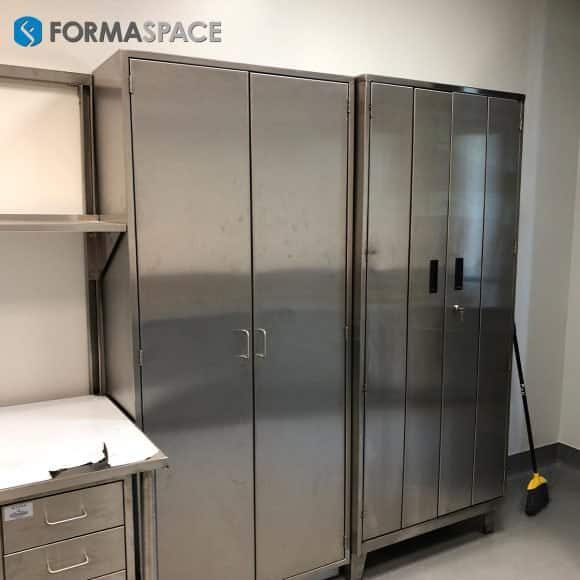
Demand Explodes for Online Gaming and Streaming Video
Cocooning at home has also affected how we entertain ourselves.
Movie theaters are just now tentatively reopening; in their place, Hollywood studios have experimented with releasing new films direct to video streaming services, which are seeing record subscriber growth.
One surprise during the pandemic has been the revival of the drive-in theater, with resurging attendance at old drive-in movie theaters as well as screenings set up on an ad hoc basis in grassy fields and parking lots organized by local arts organizations and city parks and recreation departments. Other “old school” sales success stories include a resurgence in sales of traditional family board games and puzzles, especially jigsaw puzzles.
But the vast majority of games are played online or on electronic game devices these days, and that trend has intensified during the pandemic. Online gaming sales and subscriptions are skyrocketing as well as interest in following e-sports.

Video-based Education and Collaborative Software Sales Zoom to New Heights, along with Cybersecurity Solutions
Online games are not the only thing capturing the eyeballs of family members staying home during the pandemic.
Millions of school children participated in online learning classes throughout the spring, and many will continue to do so in the fall, at least part-time. Adults are also taking the opportunity to learn new skills online as well, with many taking online classes (or watching YouTube tutorials) to learn a second language, brush up on their career skills, or learn how to cook new recipes at home.
Employees working from home are also driving the use of online video conferencing services, such as Zoom. Billed as a nine-year-old “overnight success,” Zoom’s year over year revenue growth has exploded by 355%, driving the value of stock owned by the company’s founder Eric Yuan to $23 billion in late August.
Aside from online video conferencing, all forms of cloud-based software tools (which help workers collaborate with one another while working at home) have experienced massive growth. Analysts reckon cloud-based computing services grew by an unprecedented 33% in the second quarter alone, to sales of more than $30 billion.
The combined demand for equipping both students learning from home and employees working from home offices led to supply chain shortages in electronic devices, particularly in laptop computers and webcams. Companies are also investing heavily in cybersecurity services and anti-virus software subscriptions to help protect the computer systems used by employees working from home.
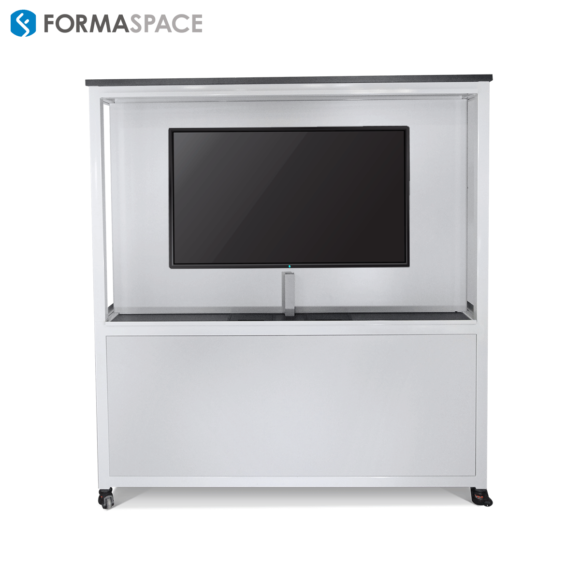
Sanitation and Cleaning Products Manufacturers Struggle to Meet Market Demand
As all of us are all too aware, it has become a challenge to find common cleaning and sanitation products, from hand sanitizer to Lysol disinfectant spray, to Clorox sanitizing wipes. There is also a high demand for companies offering cleaning services to sanitize offices, warehouses, and residential homes.
The unprecedented demand for cleaning products has caught the existing supply chain flat-footed.
Clorox, for example, is now producing 1,000,000 disinfectant wipes a day, but its CEO says they probably won’t catch up with demand until sometime in 2021.
High tech sanitation products are in high demand as well, such as the UV light “robots” originally targeted at sanitizing hospital rooms. These are being snapped up by public transit agencies (to clean their bus, train, and subway interiors) as well as by facility managers who are sourcing them to clean factories and offices.
Transparent dividers that help protect employees working together in close proximity, such as the plastic barrier shields offered by Formaspace, are selling very well. However, the unprecedented demand has, at times, led to spot shortages in the raw materials used to make the shields, as the plastics manufacturers work overtime to ramp up production.

Strong Demand Continues for PPE, Clinical Testing Services, and Diagnostic Kits
The Coronavirus pandemic has radically changed consumer healthcare consumption patterns.
Demand for PPE, especially high-quality face masks, quickly outstripped demand, leaving companies such as 3M, the inventor of the gold standard N-95 mask, unable to meet burgeoning demand.
While demand for PPE products skyrocketed during the pandemic, demand for healthcare services has plummeted.
As a result, many health care providers, from solo practitioner family doctors and dentists to the largest hospital systems, are hurting for business as consumers fearful of contracting the virus shy away from visiting medical care facilities, choosing instead to limit their visits to telemedicine care. The resulting downturn in demand for surgical and other medical procedures is causing many health care systems to resort to dramatic budget cuts, including significant layoffs.
However, clinical testing services (and the products associated with them, including test kits and reagent chemicals) are in high demand, thanks to purchases related to Covid testing.
Abbott Laboratories, in particular, is poised for major growth thanks to its recent introduction of a rapid Covid test that the Federal government is purchasing for national distribution to individual state public health authorities. The company has announced it expects to ramp up production of these kits to 50 million per month.

Certain Professional Service Sectors See Sharp Uptick in Demand
White-collar professionals, while generally better off than most, have not been immune to job losses during the pandemic, particularly those working in the oil and gas industry, which has seen a number of layoffs and closures due to the reduced demand for energy products and resulting low oil prices.
However, some professionals are finding their services in demand.
Disputes over commercial rent payments, as well as the need by many companies to find a way to restructure their finances, has led to an increased demand for finance professionals, corporate attorneys, including, unfortunately, those specializing in financial restructuring and bankruptcy cases.
Quite a few investment professionals have also done well by a stock market that seems to be going up, up, up in a way that some skeptics view as being wholly detached from Main Street conditions on the ground.
And, while it’s been a tricky time for entrepreneurs to take their startup companies public with an IPO, there are some new emerging financing vehicles (dubbed SPACs) that are helping young companies get necessary financing through investment funds.
Many established companies are also pivoting their business models to address changing market conditions, which is helping drive demand for talented advertising agencies and brand marketing specialists who can help them launch new products and services into the market.
Are you Ready to Meet the Next Business Challenge? We can Help.
If you can imagine it, we can build it.
Now is the time to make your distribution center, manufacturing facility, laboratory, or educational facility a safer, more efficient place to work.
Formaspace can help. We build custom furniture here at our factory headquarters in Austin, Texas, to help you maximize your workflow and improve your productivity.
Find out how we can work together. Talk to your Formaspace Design Consultant today.















